Preparing for Travel to Japan: Hiragana vs Katakana vs Kanji
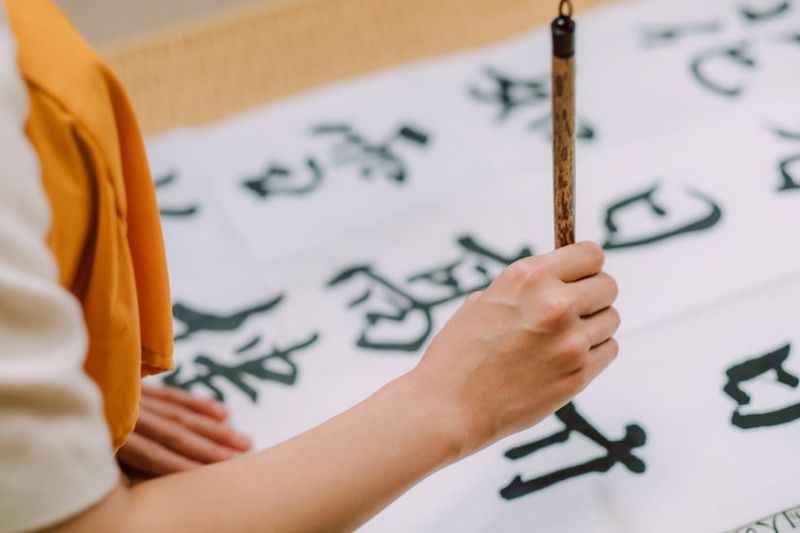
Planning a trip to Japan? Familiarizing yourself with the Japanese writing system is essential for a smooth and enriching experience.
Hiragana, Katakana, and Kanji are the three writing systems you'll encounter. Hiragana is the basic form, used for native Japanese words, while Katakana is employed for loanwords and onomatopoeic expressions.
Kanji, derived from Chinese characters, represents words and concepts. Learning all three systems is beneficial for reading signs and menus, and communicating effectively.
In this article, we'll explore the differences between Hiragana, Katakana, and Kanji, and provide insights to help you navigate the fascinating world of Japanese writing.
If you want to learn Japanese script online, you can sign up to Japanese Uncovered, an online Japanese course which teaches the differences between these scripts through story. A free trial is accessible below.
Japanese Writing System Explained

The Japanese writing system is a complex amalgamation of three distinct scripts: Hiragana, Katakana, and Kanji. Each system possesses unique characteristics and serves specific purposes, making it essential to grasp their nuances for effective learning and communication in Japanese.
Hiragana is considered the foundation of Japanese writing. It comprises 46 characters representing syllables and sounds. It is employed for native Japanese words, verb endings, and particles.
Katakana, sharing a similar character set with Hiragana, serves the purpose of writing loanwords borrowed from other languages, particularly English, as well as onomatopoeic expressions.
In contrast, Kanji, borrowed from Chinese characters, represents words, ideas, and concepts, adding depth and complexity to the Japanese written language. With thousands of characters, Kanji requires dedicated study to understand its multiple readings and meanings within different contexts.
Mastery of the writing system, encompassing Hiragana, Katakana, and Kanji, empowers learners to read, write, and comprehend various types of texts, from everyday communication to formal documents and literature.
Embracing these three writing systems paves the way to a richer understanding of the Japanese language, culture, and communication.
Hiragana: The Foundation of Japanese Writing
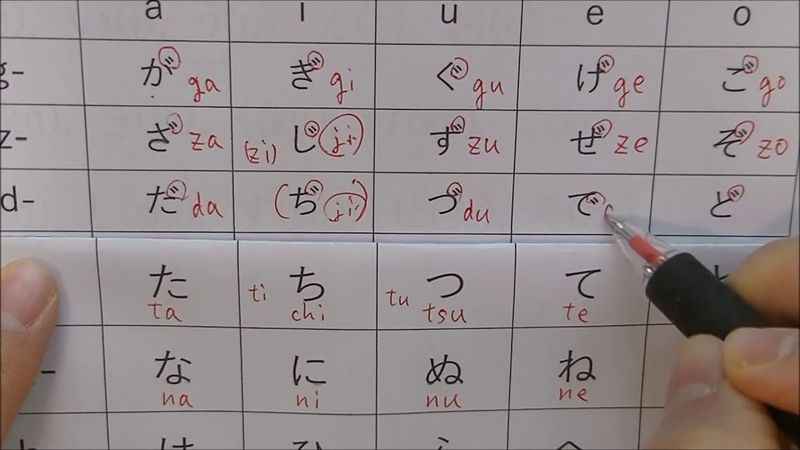
Hiragana serves as the fundamental and widely accepted form of Japanese writing. Consisting of 46 characters, it represents syllables and sounds in the Japanese language, encompassing native Japanese words, verb endings, particles, and grammatical elements.
As children in Japan embark on their language learning journey, they commence by mastering Hiragana, laying the groundwork for their understanding of other writing systems.
While it is possible to solely employ Hiragana for writing in Japanese, such an approach may cause the text to appear childlike or overly simplistic to native speakers.
Therefore, it is crucial to acquire proficiency in additional writing systems, such as Katakana and Kanji.
By embracing these diverse scripts, learners can effectively convey their thoughts and ideas, ensuring their written communication resonates with native speakers and exhibits a deeper appreciation for the intricacies of this language.
Katakana: Loanwords and Emphasis
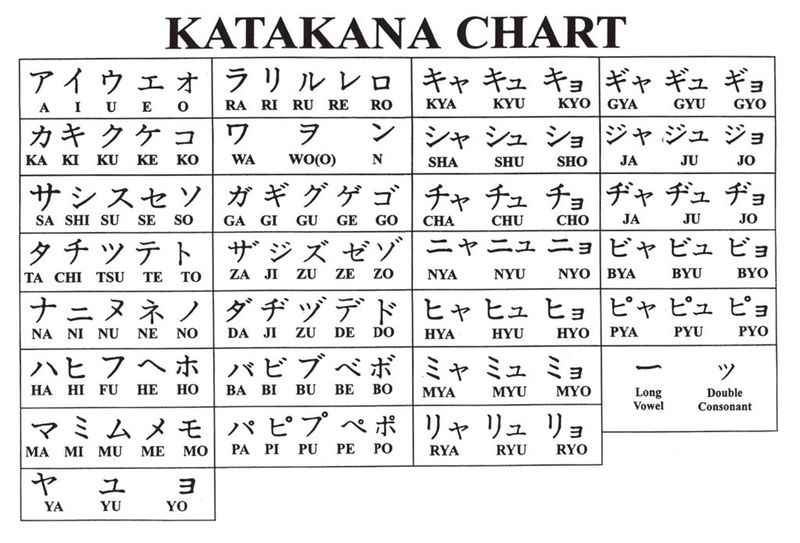
Katakana, similar to Hiragana, is a syllabic script utilized in Japanese writing. It encompasses the same 46 characters as Hiragana but serves different purposes. Its primary role is to represent loanwords borrowed from other languages, particularly English, and to denote onomatopoeic words.
Given Japan's incorporation of numerous foreign terms into its lexicon, Katakana words frequently emerge in daily life. Acquiring proficiency in Katakana is essential for comprehending and correctly reading and pronouncing these loanwords.
By understanding Katakana, learners can navigate the influx of foreign vocabulary, gaining insights into Japan's cultural exchange and linguistic adaptations. Furthermore, Katakana serves as a tool for emphasizing certain words or phrases within the written text, adding emphasis and conveying a particular tone.
By embracing the nuances of Katakana, learners enhance their language skills, enabling effective communication and a deeper understanding of Japan's linguistic landscape.
Kanji: Chinese Characters in Japanese Writing

Kanji, originating from Chinese characters, plays a vital role in Japanese writing. These logographic characters represent words, ideas, and concepts rather than individual sounds.
Kanji characters possess multiple readings and meanings, which vary depending on the context, making them more intricate to learn and comprehend.
The usage of Kanji is extensive in written Japanese, with an estimated several thousand characters in total. Proficiency in Kanji is indispensable for reading newspapers, books, and formal documents in Japan, as they are deeply embedded in the written language.
While acquiring Kanji knowledge requires time and effort, it significantly enhances one's ability to comprehend written Japanese texts, enabling a deeper understanding of the language's nuances and subtleties.
By delving into the world of Kanji, learners unlock a new dimension of communication and cultural appreciation, gaining access to a broader range of literature, historical texts, and cultural references.
Mastering Kanji expands one's ability to navigate the intricate written landscape of Japan, fostering a deeper connection with its rich linguistic heritage.
Hiragana vs Katakana: Where They’re Used
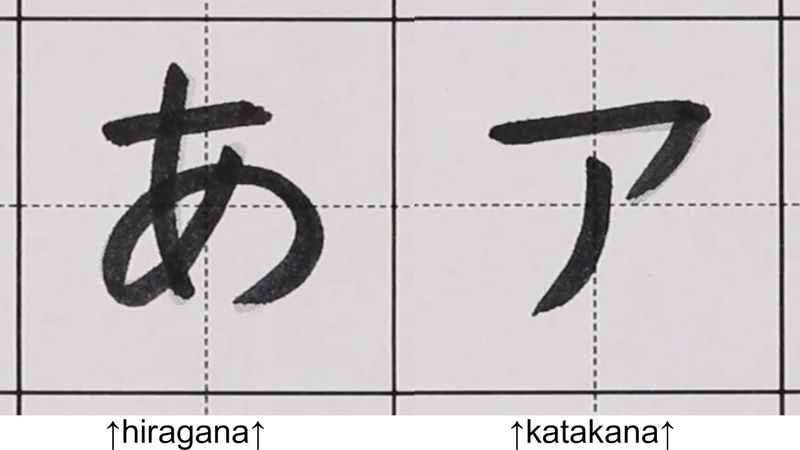
Hiragana is considered the standard form of Japanese writing and therefore your starting point. Hiragana can either be used on its own or alongside kanji to form words.
Japanese children will start by learning Hiragana before working their way through to Katakana, so it makes sense to begin by learning this form before moving on to a more complex form of writing.
However, writing Hiragana without kanji will make your writing seem childlike and very simple - too simple for some native speakers to understand, in fact. While writing only in Hiragana is fine for beginners, you don’t just want to stop there when learning.
Japanese people understand that learning to read and write Japanese is difficult for non-natives, and therefore accommodate accordingly. For example, most children’s books and well-known games, such as Pokemon, are only written in Hiragana to make it easier for non-natives to understand.
So, learning Hiragana is a great start but then you will also need to write Katakana and Kanji Japanese symbols. You’ll have a very difficult time understanding Japanese texts without understanding Katakana and Kanji as well.
Hiragana vs Katakana: The Characters

Now let’s focus more on the characters of Hiragana and Katakana. Looking at Hiragana, the symbols are curly and look similar to English written in cursive.
On the other hand, Katakana looks more like print with blocky and sharp symbols. However, it is used to show that the word has been translated from another language to Japanese and adapted to fit the writing structure.
Katakana can be used for emphasis within the writing, making it automatically more comprehensive and emotive.
Hiragana vs Kanji
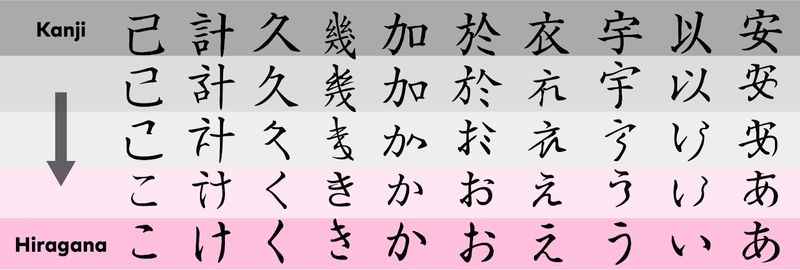
Hiragana and Kanji are two fundamental components of the writing system, each with its own unique characteristics and roles. Hiragana, a phonetic writing system, represents the basic sounds of the Japanese language.
In contrast, Kanji, derived from traditional Chinese characters, represents words, ideas, and concepts. Kanji characters have multiple readings and meanings, adding depth and complexity to the Japanese written language.
Learning Hiragana is crucial for beginners to understand the basic structure of the language, while Kanji proficiency is necessary for reading newspapers, books, and formal documents.
While both systems have their significance, Kanji usage greatly expands the vocabulary and enhances the comprehension of written Japanese.
Mastering both Hiragana and Kanji is an essential step in becoming proficient in the Japanese language and fully immersing oneself in the rich culture and traditions of Japan.
Katakana vs Kanji

Katakana and Kanji are two integral components of the writing system, each serving distinct purposes.
Katakana, a syllabic script, is primarily used for writing loanwords from foreign languages and onomatopoeic expressions in Japanese. It allows for the representation of sounds and emphasizes the pronunciation of words.
While Katakana facilitates the understanding and pronunciation of borrowed words, Kanji provides a more comprehensive and versatile approach to written Japanese.
Mastery of both Katakana and Kanji is crucial for effective communication and reading comprehension in Japanese.
By learning Katakana, one can decipher loanwords from various languages, while Kanji proficiency enables the interpretation of complex texts, newspapers, and literature.
The combination of Katakana and Kanji usage is essential for a comprehensive understanding of the Japanese language and its diverse written expressions.
The Alphabet: Hiragana vs Katakana
Both the Katakana and Hiragana alphabets are written on charts made of rows and columns. The vertical columns showcase the consonants while the horizontal rows showcase the vowels. All characters will have a consonant and a vowel. The exception is ん (‘n’ or ‘m’), or single vowel sounds.
Below are the charts for both the Hiragana and Katakana alphabets so that we can break down both charts.
(https://d34d5h8w87upgo.cloudfront.net/90e05ff9-20a6-4abb-9fcc-f63d07f8a607)
Take a look at both of these charts and you’ll see that they both have a column for the vowel sounds - あ / ア (a), い / イ (i), う / ウ (u), え / エ (e), お / オ (o) - as well as lots of rows for different consonant sounds. For example, the second row is for K sounds - か / カ (ka), き / キ(ki), く / ク(ku), け / ケ(ke), こ / コ(ko).
You can use these charts to simplify the words that you might need to conjugate when you begin learning all about grammar. Below we will break down these sounds to make them a little easier for you to learn.
Row One / Vowels
- あ / ア (a) - ‘ah’, pronounced ‘ahhh’.
- い / イ (i) - ‘ee’, pronounced ‘see’
- う / ウ (u) - ‘oo’, pronounced ‘booth’.
- え / エ (e) - ‘eh’, pronounced ‘bed’.
- お / オ (o) - ‘oh’, pronounced ‘boat’.
Row Two / K
- か / カ (ka) - ‘kah’, pronounced ‘can’.
- き / キ (ki) - ‘kee’, pronounced ‘key’.
- く / ク (ku) - ‘koo’, pronounced ‘cook’.
- け / ケ (ke) - ‘keh’, pronounced ‘kettle’.
- こ / コ (ko) - ‘koh’, pronounced ‘cola’.
Row Three / S
- さ / サ (sa) - ‘sah’, pronounced ‘sanity’.
- し / シ (si) - ‘shi’, pronounced ‘shin’.
- す/ ス (su) - ‘soo’, pronounced ‘soothe’.
- せ / セ (se) - ‘seh’, pronounced ‘senate’.
- そ / ソ (so) - ‘soh’, pronounced ‘soda’.
You can see that there is an irregularity in the pronunciation of the S column - し / シ (si) which is pronounced ‘shi’. There are a few other irregularities on the tables, like ち (“chi”), つ (“tsu”), ふ (“fu”), and ん (“n” or “m”). However, the majority of the symbols are straightforward to learn.
So, once you memorize the vowel sounds, you’ll be able to pronounce the majority of the Hiragana and Katakana alphabet without any issues. You can add Y characters to make new sounds and to make conjunctive sounds to make the word flow better. For example, とうきょ う can be read as ‘Toe-Key-Yoh’, but the Y character allows it to be read ‘Toh-Kyo’ instead.
There is much more to learn about the alphabet for both Hiragana and Katakana. However, above we have given you an insight into the basics that you’ll be learning when it comes to researching how to read and write Japanese characters correctly.
Reading and Understanding Japanese Writing

Luckily for beginners learning how to understand this writing, both Katakana and Hiragana are phonetic and therefore always read the same way. This means that, unlike English where letters can be pronounced differently according to different words, Japanese symbols are always pronounced the same way.
You can put a Hiragana or Katakana symbol within 100 words, and it will always be read the same way, with no exceptions. If you were to read Kanji, the readings will change depending on the word. However, this is something to look forward to once you’ve learned how to read and write Hiragana and Katakana.
The fact that learning the Japanese alphabet is easier to learn than the English alphabet should bring some solace to you as you embark on this journey of learning Japanese symbols.
There's more...
Another feature that you will find helpful is that Katakana almost always sounds like a word that you already know. For example, オレンジジュース translates to orange juice.
If you can read Katakana symbols, you’d be able to see オレンジジュース as orenjijūsu. As you can see, orenjijūsu looks similar to orange juice. So, if you can read the symbols, you’d be able to translate many of the words into English. This makes it easier to read Japanese symbols.
The Japanese language takes words from all over the world, for example from French, Portuguese, and many other languages, including English.
If you are bilingual, you might have an easier time reading Japanese than if you were to only know English.
How To Learn Hiragana, Katakana and Kanji

When embarking on the journey to learn the writing system, it is advisable to simultaneously learn Hiragana, Katakana, and Kanji. Although it is possible to learn them separately, mastering them together offers a more comprehensive approach.
Learning Kanji, in particular, may require additional effort due to the multiple readings and meanings associated with each character. Various textbooks and online platforms offer systematic approaches to gradually building your Kanji vocabulary and comprehension skills.
The excellent JapanesePod101 is an excellent resource that has free workbooks, eBooks, and videos for you to watch. Once you’re finished learning about these languages, you can then use this resource to learn the spoken language as well!
With dedication, practice, and access to quality learning materials, you can confidently embark on your journey to master Hiragana, Katakana, and Kanji, empowering yourself to read, write, and understand the rich tapestry of the Japanese language.
Difference Between Hiragana, Katakana and Kanji

They are three distinct writing systems in the Japanese language, each with its own characteristics and functions.
Hiragana is a phonetic script used for native Japanese words and verb endings.
Katakana, also a phonetic script, is primarily employed for writing loanwords borrowed from other languages and onomatopoeic expressions.
Kanji, on the other hand, is a logographic script derived from Chinese characters, representing words, ideas, and concepts. It adds depth and complexity to the written language, with multiple readings and meanings depending on context.
While Hiragana and Katakana focus on sounds, Kanji provides visual representation and meaning. Mastery of all three systems is essential for effective communication and reading comprehension in Japanese.
Katakana and Hiragana facilitate basic reading and writing, while Kanji enhances the vocabulary and comprehension of written Japanese, particularly in newspapers, books, and formal documents.
What to Know Before You Go to Japan
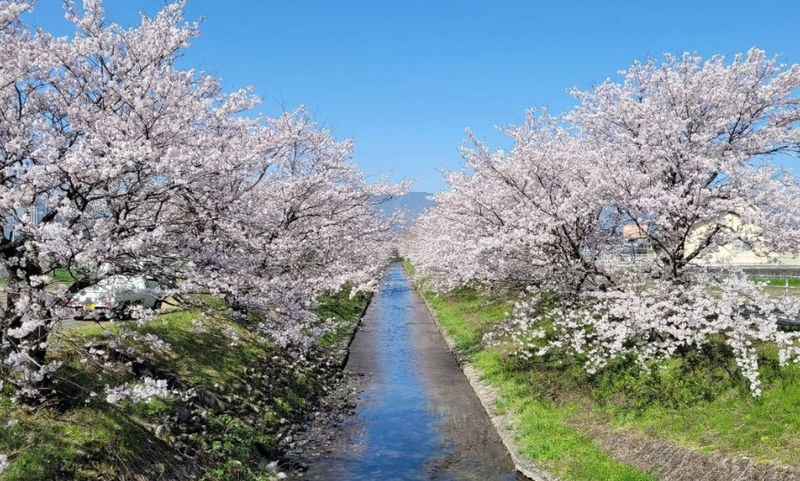
Before embarking on your journey to Japan, there are several important aspects to be aware of. Firstly, familiarize yourself with the writing system.
Understanding these writing systems will greatly enhance your ability to read signs and menus, and communicate with locals by text or email.
Additionally, it is helpful to learn common Japanese words and phrases to navigate daily interactions. Respect for Japanese customs and etiquette is crucial, such as bowing when greeting others and removing your shoes in certain places.
Japan's unique culture, steeped in traditions and rituals, is a delight to experience. Familiarize yourself with the country's rich history, including its use of Kanji characters derived from Chinese.
Lastly, be prepared for the efficient and punctual public transportation system, which is crucial for getting around cities and exploring various regions of Japan.
By embracing these key aspects, you'll be well-prepared for an enriching and immersive experience in Japan.
How to Learn the Japanese Language for Your Trip
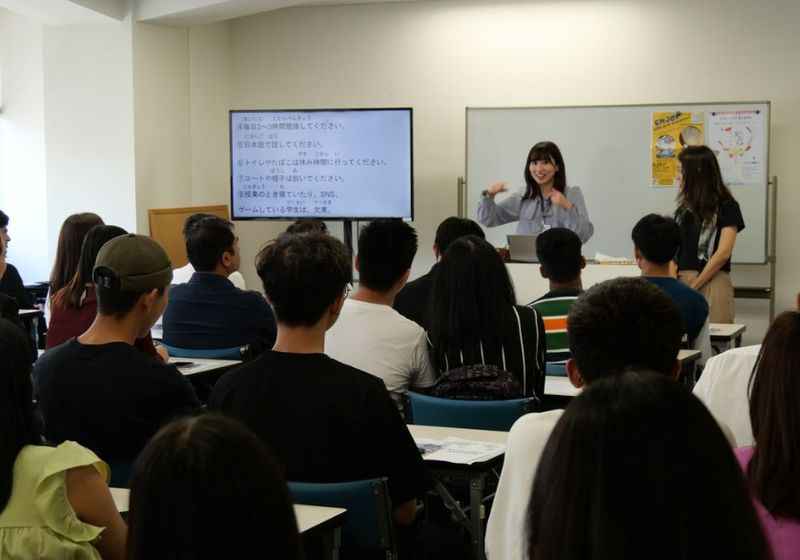
Learning the Japanese language is a valuable endeavor for anyone planning a trip to Japan. To get started, focus on writing Japanese words using the Katakana and Hiragana scripts.
Hiragana represents native Japanese words, while Katakana is used for foreign words and loanwords. Mastering the Hiragana chart is essential for reading and writing basic Japanese text.
Additionally, understanding Kanji characters is crucial, as they represent thousands of words and concepts. While learning all several thousand Kanji characters may seem daunting, gaining familiarity with commonly used ones is a good starting point. Each Kanji character has its own meaning and can be read differently depending on context.
To further enhance your language skills, practice speaking and listening to Japanese. Consider enrolling in language classes, utilizing language apps, or finding language exchange partners. Immerse yourself in Japanese culture and engage with native speakers to gain a deeper understanding of the language.
By learning the fundamentals of Japanese, including writing in Hiragana, recognizing Kanji characters, and practicing spoken Japanese, you'll embark on your trip with the confidence to communicate effectively and appreciate the rich cultural heritage of Japan.
FAQs About Preparing for Travel to Japan
Let's answer some questions about visiting Japan and learning Japanese, as well as the differences between these Japanese scripts.
Should I learn: hiragana, katakana or kanji?
When learning Japanese, it is essential to learn all three writing scripts. Hiragana and Katakana aid in reading loan words and represent the phonetic value of words. Kanji represents words, concepts, and ideas, but its individual characters can have different readings due to their Chinese origin.
Do Japanese use kanji or hiragana?
Japanese writing typically incorporates both kanji and hiragana. Hiragana is used for native Japanese words, while kanji represents words and concepts. Hiragana characters are phonetic, allowing for more than one pronunciation, while kanji characters are borrowed from Chinese and add depth.
What should I know before visiting Japan?
Before visiting Japan, it's essential to know a few things. Respect local customs and traditions, such as bowing and removing shoes indoors. Learn basic Japanese phrases, carry cash as credit cards may not be accepted everywhere, and familiarize yourself with public transportation.
Research etiquette for using hot springs and be mindful of noise levels in public. Finally, try the delicious local cuisine and embrace the rich cultural experiences Japan offers.
What should I bring to Japan?
When visiting Japan, consider bringing essentials like comfortable walking shoes, weather-appropriate clothing, and a compact umbrella. If you require specific medications, it's wise to bring an adequate supply.
Additionally, a portable Wi-Fi device or SIM card can be useful for staying connected, and a universal power adapter for charging your electronics.
Summing Up Preparing for Travel to Japan with Hiragana vs Katakana vs Kanji
Understanding the Japanese writing systems of Hiragana, Kanji, and Katakana, is helpful for effective communication and comprehension.
Mastering these systems unlocks the ability to read Japanese texts, grasp native words, and fully engage with the rich culture of Japan.
By delving into Kanji, Hiragana, and Katakana, travelers can navigate menus and read signs with confidence, enhancing their overall travel experience.
These writing systems are the keys to unlocking the fascinating world of Japanese language and culture, enabling travelers to connect with locals, appreciate traditional customs, and fully immerse themselves in the beauty of Japan.







